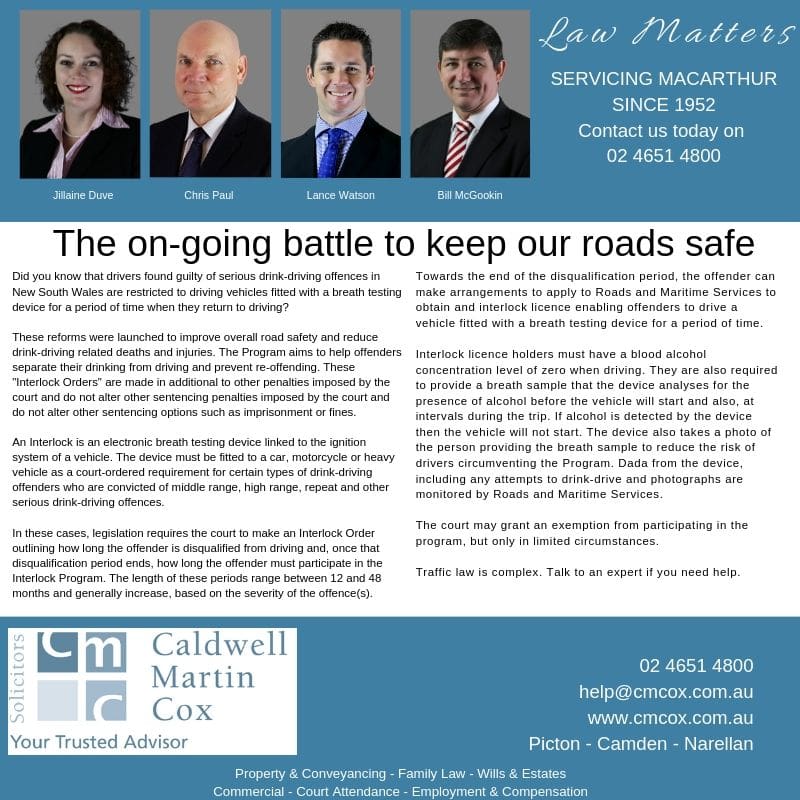Did you know that drivers found guilty of serious drink-driving offences in New South Wales are restricted to driving vehicles fitted with a breath testing device for a period of time when they return to driving? Read our article from The District Reporter to learn more. The District Reporter
These reforms were launched to improve overall road safety and reduce drink-driving related deaths and injuries. The Program aims to help offenders separate their drinking from driving and prevent re-offending. These “Interlock Orders” are made in additional to other penalties imposed by the court and do not alter other sentencing penalties imposed by the court and do not alter other sentencing options such as imprisonment or fines.
An Interlock is an electronic breath testing device linked to the ignition system of a vehicle. The device must be fitted to a car, motorcycle or heavy vehicle as a court-ordered requirement for certain types of drink-driving offenders who are convicted of middle range, high range, repeat and other serious drink-driving offences.
In these cases, legislation requires the court to make an Interlock Order outlining how long the offender is disqualified from driving and, once that disqualification period ends, how long the offender must participate in the Interlock Program. The length of these periods range between 12 and 48 months and generally increase, based on the severity of the offence(s).
Towards the end of the disqualification period, the offender can make arrangements to apply to Roads and Maritime Services to obtain and interlock licence enabling offenders to drive a vehicle fitted with a breath testing device for a period of time.
Interlock licence holders must have a blood alcohol concentration level of zero when driving. They are also required to provide a breath sample that the device analyses for the presence of alcohol before the vehicle will start and also, at intervals during the trip. If alcohol is detected by the device then the vehicle will not start. The device also takes a photo of the person providing the breath sample to reduce the risk of drivers circumventing the Program or removing the device, including any attempts to drink-drive and photographs are monitored by Roads and Maritime Services.
The court may grant an exemption from participating in the program, but only in limited circumstances.
Traffic law is complex. Talk to an expert if you need help.




